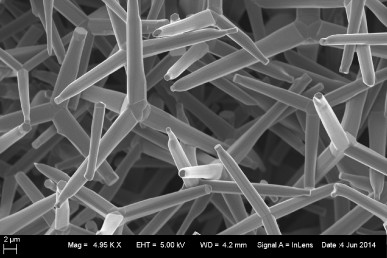In any event, it’s time to start thinking about sunscreens (for those of us in the Northern Hemisphere.) One other thing, this is informational; it is not an endorsement. A March 1, 2022 Mblue Labs product announcement on EurekAlert (also on EIN Presswire) describes some of the research that went into this new sunscreen,
(Bethesda, MD – March 1, 2022) Mblue Labs releases the first sunscreen based on a recent study that found Methylene Blue, a century old medicine, to be a highly effective, broad-spectrum UV irradiation protector that absorbs UVA and UVB, repairs ROS (Free Radicals) and UV irradiation induced DNA damages, and is safe for coral reefs. The research paper, “Ultraviolet radiation protection potentials of Methylene Blue for human skin and coral reef health ” was published in Nature’s Scientific Reports (5/28/2021) https://www.nature.com/articles/s41598-021-89970-2 [open access].
80% of today’s sunscreens use Oxybenzone as a chemical UV blocker, despite multiple studies that have shown it expedites the destruction of coral reefs. Several states and countries have now banned the use of Oxybenzone and its derivatives to stop the devastating effects on the world’s marine ecosystem. In addition, consumers focus primarily on the Sun Protection Factor (SPF) to prevent sunburns and potentially dangerous long-term health issues. However, SPF only measures UVB exposure, leaving sunscreen users vulnerable to UVA-triggered oxidative stress and photo-aging.
“Our peer-reviewed study demonstrates that Methylene Blue is an effective UV blocker with a number of highly desired characteristics as a novel ingredient to be included in sunscreens. It shows a broad spectrum absorption of both UVA and UVB rays, promotes DNA damage repair, combats reactive oxygen species (ROS) induced by UVA, and most importantly, poses no harm to coral reefs.” says the study’s senior author Dr. Kan Cao, Founder of Mblue Labs, Bluelene Skincare and a Professor at the University of Maryland Department of Cell Biology and Molecular Genetics.
Mblue Labs and the University of Maryland have a pending patent on the property of Methylene Blue as an effective UV blocking agent that also delays skin aging and promotes DNA damage repair. The company’s first anti-aging sunscreen called “Bluevado SunFix”, contains the FDA approved, safe active ingredients Zinc Oxide and Titanium Dioxide, together with an optimized dosage of Methylene Blue.
“Our Vision for this novel multifunctionsunscreen is deeply rooted in our concern for coral reefs – the rainforest of the ocean. We look forward to working with the industry and the FDA to get Methylene Blue included in the sunscreen monograph. We are confident that Bluevado SunFix not only delivers broad spectrum UVB/UVA protection and post sun repair, but also provides the full anti-aging benefits of our Bluelene Moisturizer with the same cosmetic elegance.” says Jasmin EL Kordi, CEO Mblue Labs.
This research was supported by a National Science Foundation (NSF) Small Business Technology Transfer Grant (Grant: 1842745). This press release does not necessarily represent the views of the NSF. This study was conducted jointly by researchers at Mblue Labs and the University of Maryland.
About Mblue Labs + Bluelene:
MBlue Labs provides revolutionary anti-aging technology to consumers around the world. The company’s clinical skincare brand Bluelene uses patented ingredient Methylene Blue to repair and protect skin on the mitochondrial level. Mblue Labs’ recent research demonstrates Methylene Blue as the new retinol challenger for anti-aging treatments, in addition to its exciting properties as a new UV sunscreen.
I went looking for the new sunscreen (Bluevado SunFix) and found this,
$58.00
…
Bluevado SunFix is the first FDA-approved anti-aging sunscreen with Methylene Blue. Methylene Blue’s unique ability to promote skin cell health, repair/delay skin aging and protect against UVA and UVB radiation, is now captured in the bravado of this revolutionary SPF Day Cream.
Our innovative formulation blends Methylene Blue with proven minerals to outperform Oxybenzone, deliver cosmetic elegance, and protect our precious coral reefs from harmful substances.
Methylene Blue is a preferred alternative to retinol for sensitive skin sufferers and with SunFix there is no retinol sun sensitivity.
Bluevado SunFix is proudly made in the USA and is formulated for ALL skin types.
Preorder now to reserve your SunFix. First shipments are available in mid-March [2022].
Application:
Use as a daily SPF Moisturizer. For sun protection apply 15mins before sun exposure and reapply after 40 minutes of swimming or sweating.
Benefits:
Broad-spectrum UVA/UVB sun protection
Prevents pre-mature aging
Repairs photo-aging DNA damage caused by UVA exposure
Reduces fine lines, crows feet, and wrinkles
Improves skin elasticity & firmness
Provides all-day skin hydration
Protects coral reefs
Free USPS shipping for all domestic orders over $34!
Ingredients:
Active Ingredients: Zinc Oxide 8.2%, Titanium Dioxide 2.8%
Inactive Ingredients: Water (Aqua), Caprylic/Capric Triglyceride, C13-15 Alkane, Cetearyl Alcohol, Glycerin, Oryza Sativa (Rice) Bran Oil, Heptyl Undecylenate, Cetyl Alcohol, Argania Spinosa (Argan) Kernel Oil, Tocopheryl Acetate, Glyceryl Stearate, PEG-100 Stearate, Capryloyl Glycerin/Sebacic Acid Copolymer, Sorbitan Laurate, Butyrospermum Parkii (Shea) Butter, Cocos Nucifera (Coconut) Oil, Bisabolol, Xanthan Gum, Polyhydroxystearic Acid, Jojoba Esters, Polysorbate 60, Ascorbyl Palmitate, Citrus Aurantium Bergamia (Bergamot) Peel Oil, Pelargonium Graveolens (Geranium) Leaf Oil, Citrus Grandis (Grapefruit) Peel Oil, Lavandula Angustifolia (Lavender) Oil, Phenoxyethanol, Caprylyl Glycol, Methylene Blue. [emphasis mine]
Caution: For external use only. Keep out of reach of children. In case of irritation or allergic reaction, discontinue use and consult your physician.
There’s 3 fl oz or 90 mL of product in the tube and it’s SPF 21. (If memory serves, Methylene Blue’s placement at the end of the list ingredients means that it’s the ingredient that weighs the least.)
Again, I am not endorsing this product. That said, it does look interesting.

BTW, Finding a product announcement on EurekAlert (online science news service sponsored by the American Association for the Advancement of Science [AAAS]) was a little unexpected but only because I was ignorant of their Content Eligibility Guidelines (scroll down to Business Announcements). Duly noted.
